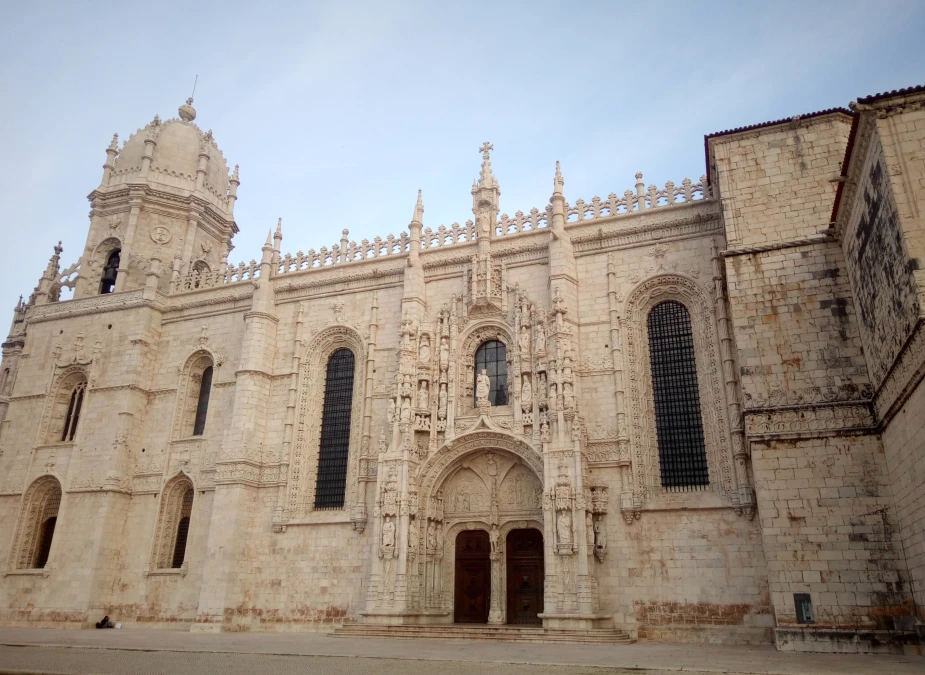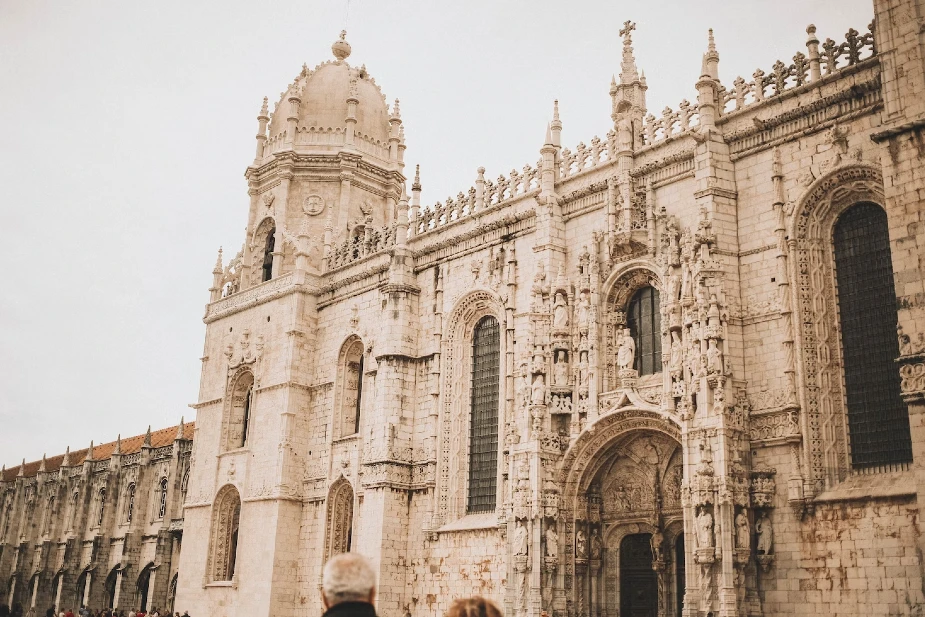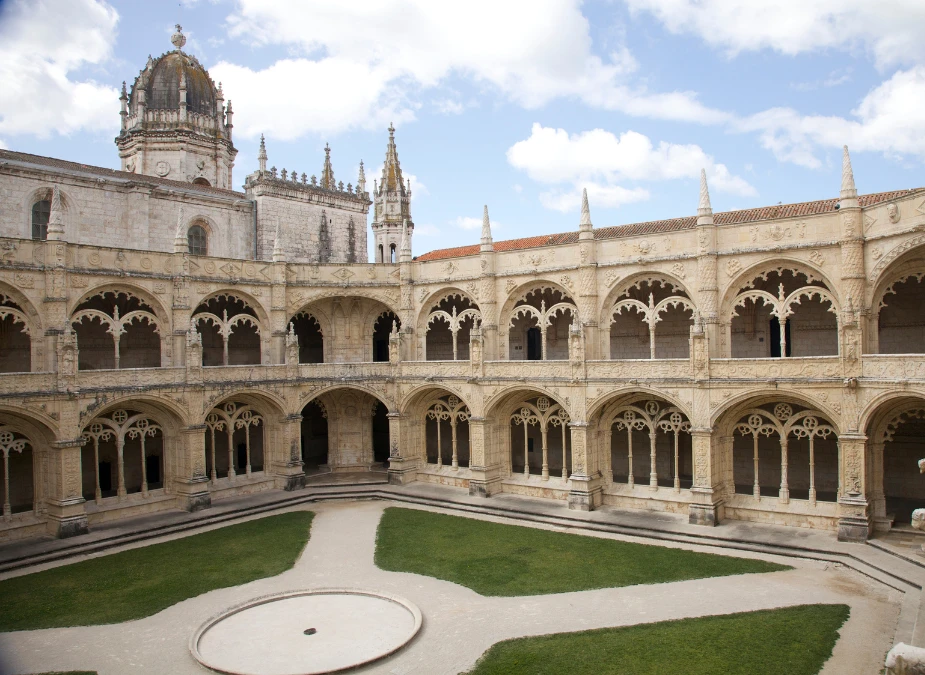The Jerónimos Monastery, also known as the Hieronymites Monastery or the Monastery of the Hieronymites (in Portuguese, Mosteiro dos Jerónimos), is a Manueline-style monument built by King Manuel I.
It is located in the parish of Belém, one of the most touristy areas of Lisbon, and has recently been the most visited cultural space in Portugal.
The Jerónimos Monastery was designated a National Monument in 1907 and was added to the UNESCO World Heritage List in 1983, along with the Belém Tower.
It was named one of the “7 Wonders of Portugal” in July 2007 and was elevated to the status of National Pantheon in May 2016.
Lisbon, Portugal, is home to several culturally and historically significant monuments. Jerónimos Monastery is one of the most charming.
It was built in the 16th century to commemorate Vasco da Gama’s voyage to India.
The legendary Portuguese explorer and other Portuguese greats such as Dom Sebastian I, Fernando Pessoa, and Afonso de Portugal are buried inside the monastery.
Inside the Jerónimos Monastery
Jeronimos Monastery is a gold mine for learning about Portuguese culture and history.
Santa Maria Church

The Church of Santa Maria is a major attraction within the Jeronimos Monastery.
It has a beautiful exterior with Manueline-style architecture.
The church was built in the 16th century, but its intricate stone carvings, rib vaults, and beautiful stained-glass windows continue to amaze visitors.
The rib vaults built by Joo de Castilho are incredibly unique and provide a fresh design perspective.
The grand arches, soaring ceilings, and other Church of Santa Maria elements impress visitors.
Buy your tickets to the Jeronimos Monastery and explore the church during your visit.
Jeronimos Monastery Cloister
The four-story cloisters of Jeronimos Monastery are a sight to behold!
The cloisters symbolize Manueline architecture in Portugal and are one of Lisbon’s most popular tourist attractions.
While Diogo de Boitaca began construction on the cloisters in the early 16th century, Joo de Castilho’s work transformed the site into what it is today.
The cloisters, surrounded by white marble columns and delicate arches, provide visitors with a relaxing experience.
Other attractions in the cloister include a lion-shaped fountain and Fernando Pessoa’s tomb.
Discoveries Memorial

Vasco da Gama was one of many famous Portuguese explorers.
The country has a long history of producing great explorers who broke new ground for the country and the world, from Pedro lvares Cabral to Ferdinand Magellan.
Built-in the 20th century, the Monument to the Discoveries honors Portugal’s great explorers and their contributions to the country’s rise to power.
Visitors can learn about Portugal’s exploration history and see ancient sculptures and carvings at the modern Monument.
Vasco da Gama’s Tomb
Vasco da Gama was a Portuguese explorer who was the first European to reach India by sea and establish an ocean route connecting Europe and Asia.
Jeronimos Monastery commemorates his journey to India and is his final resting place.
His tomb in the church’s chancel allows visitors to learn more about his life and pay tribute to the man who put Portugal on the map.
Refectory of Jerónimos Monastery

Another stop on your Jerónimos Monastery itinerary should be the Refectory. It is a historic dining hill used as a dining room for monks in the 16th century.
The room’s interior is dominated by beautiful stone arches, carved wooden ceilings, and azulejo panels, giving it a grand and royal feel.
Visitors can tour the entire Refectory and learn about the monastery and its famous residents.
Chapter House of Jerónimos Monastery
The construction of the Chapterhouse began in the 1500s, but it was completed in the 19th century.
Later, the vaulted ceiling and interior decoration were added to the room’s main features.
The 16th-century frescoes depicting scenes from St. Jerome’s life, such as his study of the scriptures and journey to the desert, are equally captivating, leaving visitors contemplative and dreamy.
Jeronimos Monastery Library
The Jeronimos Monastery is a treasure trove of ancient knowledge.
The building’s library is an excellent place to study the philosophy and teachings of monks worldwide.
Visitors will find centuries-old books, manuscripts, and a rare edition of Cames’ works written by one of Portugal’s greatest poets.
The Library’s permanent exhibition, “A Place in Time,” details the monastery’s centuries-old history and significance to Portugal and the world.
The South Portal of Jeronimos Monastery
The South Portal of Jeronimos Monastery represents Manueline architecture. The grand entrance features a 32-meter door designed by Joo de Castilho.
It’s a sight to behold: carved-out ornate stoneworks, nearly 40 statues, and figurines embedded into pillars surround the door on all sides.
Popular figurines include Henry the Navigator, St. Jerome, Our Lady of the Three Kings, the twelve apostles, and the Archangel Michael statue.
What’s inside Jeronimos Monastery

The Upper Choir of the Church of Santa Maria offers a spectacular view of the nave and vaulting.
The Upper Choir, designed by Diogo de Torralva in 1550, was where monks would spend time chanting and praying.
There are two transept chapels in the Church of Santa Maria: the north chapel and the south chapel.
They were built around 1587 by architect Jerónimo de Ruo to house royal family tombs.
The Chapel of Senhor dos Passos is located to the left of the church’s main entrance.
View the 17th-century paneled wood carvings and craftsmanship dating back to the founding of the Senhor dos Passos brotherhood through the iron grill.
Advice for Visitors Before Visiting the Jeronimos Monastery
- You must have a ticket to enter Jeronimos Monastery. We recommend buying online tickets in advance as you skip long queues and gain priority access.
- To avoid crowds, go early in the morning or late in the afternoon.
- Photography is permitted inside the Jeronimos Monastery, but make sure your flash is turned off.
- People with limited mobility can use wheelchairs, ramps, and elevators.
- Dress appropriately for the Jeronimos Monastery. Shorts and sleeveless T-shirts should be avoided.
- The monastery is near several other Lisbon attractions, such as the Belem Tower and Pastéis de Belém. You can plan a day trip combining all the nearby attractions.
Featured Image: Phooey / Getty Images



